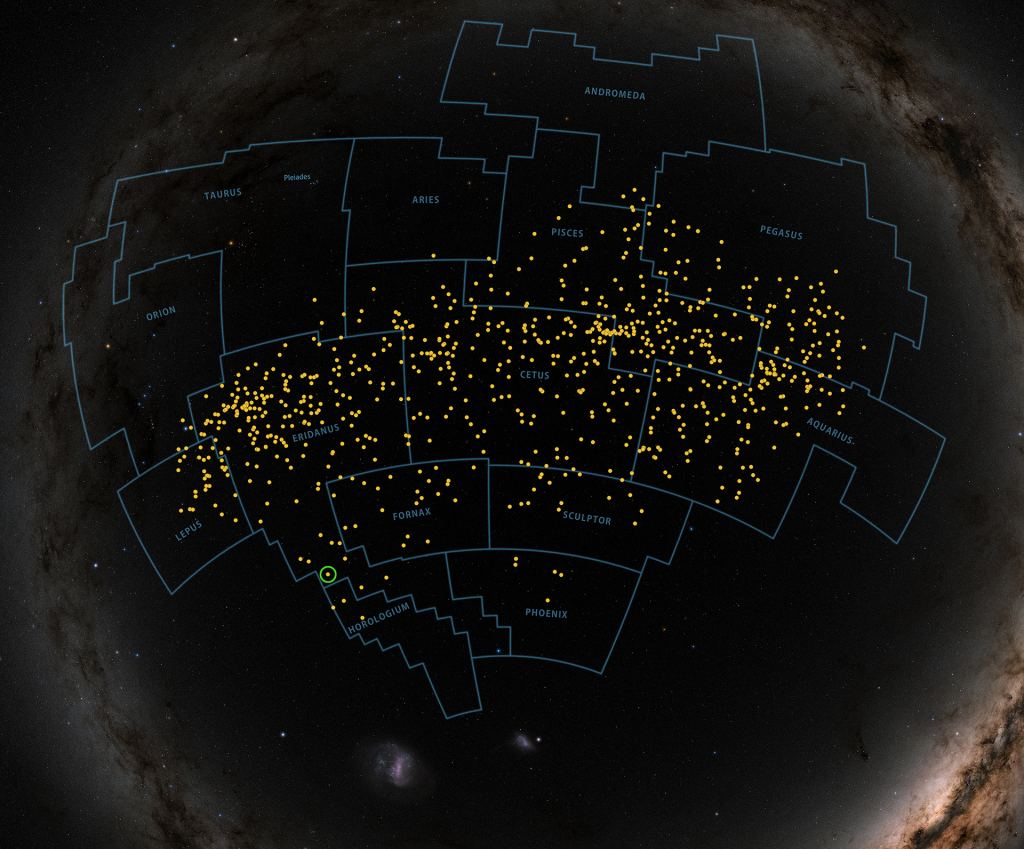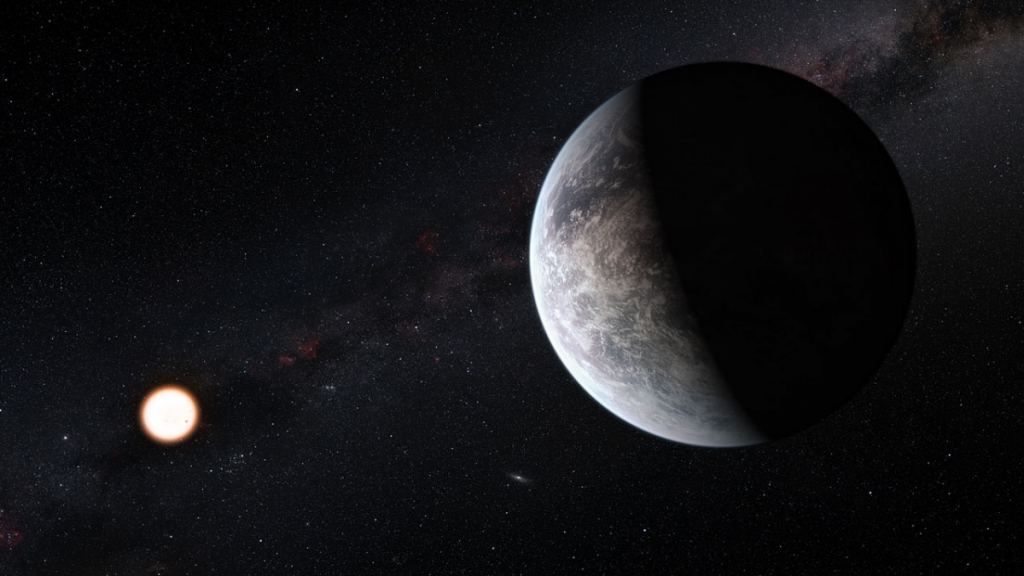Just Some of the Planets That TESS Has Found Nearby
By Matt Williams
Ever since NASA’s Kepler Space Telescope was launched in 2009, there has an explosion in the study of the extrasolar planets. With the retirement of Kepler in 2018, it has fallen to missions like the Transiting Exoplanet Survey Satellite (TESS) to pick up where its predecessor left off. Using observations from TESS, an international team of astronomers recently discovered three exoplanets orbiting a young Sun-like star named TOI 451.
The research was led by Elisabeth R. Newton, an assistant professor of physics and astronomy at Dartmouth College. She was joined by researchers from NASA JPL, NASA Goddard, NASA Ames, the NASA Exoplanet Science Institute, the SETI Institute, the Max-Planck-Institute for Astronomy, the Kavli Institute for Astrophysics and Space Research, and multiple universities and observatories.
Using data from TESS, the team examined stars in the Pisces-Eridanus stream, a collection of stars located ~260 to 737 light-years from Earth. This stream measures about 1,300 light-years in length, extends across 14 constellations, and is named for those that contain the greatest concentrations. This stream was discovered in 2019 by a team led by Stefan Meingast using data obtained by the ESA’s Gaia mission.

Later that year, researchers led by Jason Curtis – an astronomer and National Science Foundation (NSF) Fellow at Columbia University (and a co-author on the study) – analyzed TESS data for several of these stars. What they found was that they had fast spin rates and prominent starspots (which caused periodic dips in luminosity), an indication that they are significantly younger than previously thought.
Based on these results, Curtis and his colleagues found that the stream was only 120 million years old (3% as old as our Sun). When Newton and her colleagues examined data collected on this same stream by TESS between October and December 2018, they noted the presence of three exoplanets around one star in particular. Known as TOI 451 (aka. CD-38 1467), this star lies about 400 light-years away in the constellation Eridanus.
TOI 451 is a G-type (yellow dwarf) star that is about 88% as large as our Sun, 95% as massive, and also slightly cooler and dimmer (being a young star). Another indication of its youth is the fact that it rotates once every 5.1 days – or five times faster than the Sun. According to the transits detected by TESS, all three of its planets orbit TOI 451 closer than Mercury does to our Sun, making them all hot and inhospitable to life (as we know it).
Follow-up observations were conducted in 2019 and 2020 using NASA’s Spitzer Space Telescope (which retired on Jan. 30th, 2020) and archival data obtained by NASA’s Near-Earth Object Wide-Field Infrared Survey Explorer (NEOWISE) between 2009 and 2011 (which was still WISE, at the time). Additional observations were made by the Las Cumbres Observatory global network and the Perth Exoplanet Survey Telescope in Australia.

All of these confirmed the presence of these three exoplanets that fit the designation of “hot Super-Earth.” The WISE data further revealed that TOI 451 is unusually bright in infrared light at wavelengths of 12 and 24 micrometers. This suggests the presence of a debris disk, which the team estimates to be centered about as far from the star as Jupiter is from our Sun.
The team also investigated a faint neighboring star that appeared to be in close proximity to TOI 451 in the TESS images. Using data from the ESA’s Gaia Observatory, Newton’s team determined that this star may actually be a binary system of two M-type (red dwarf) stars that’s a gravitationally-bound companion to TOI 451. As Prof. Newton explained in a recent NASA press release:
“This system checks a lot of boxes for astronomers. It’s only 120 million years old and just 400 light-years away, allowing detailed observations of this young planetary system. And because there are three planets between two and four times Earth’s size, they make especially promising targets for testing theories about how planetary atmospheres evolve.”
The innermost of these planets (TOI 451 b) is about 1.9 times Earth’s size, 2 to 12 times its mass, and has an orbital period of 1.9 days. TOI 451 c is about three times the size of Earth, 16 times as massive, and has an orbital period of 9.2 days. The outermost planet (TOI 451 d) is four times the size of Earth, 4 to 19 times as massive, and has an orbital period of 16 days. Temperature estimates range from about 1,200 °C (2,200 °F) for b to about 450 °C (840 °F) for d.

Along with its relative proximity to Earth, these results indicate that TOI 451 and other stars in the Pisces-Eridanus stream are likely to be excellent candidates for study. Particularly, the young age of these stars means that they could reveal a great deal about the formation and evolution of stars and planets. As Jessie Christiansen, a co-author of the paper and the deputy science lead at the NASA Exoplanet Archive, explained:
“Thanks to TESS’s nearly all-sky coverage, measurements that could support a search for planets orbiting members of this stream were already available to us when the stream was identified. TESS data will continue to allow us to push the limits of what we know about exoplanets and their systems for years to come.”
Like its predecessor, TESS searches for exoplanets by examining thousands of stars in a field and looking for periodic dips in brightness. These are indications of transits, where planets pass in front of the face of a star (relative to the observer). Under the right conditions, light passing through an exoplanet’s atmosphere will allow astronomers to obtain spectra, which can be used to determine an atmosphere’s composition.
Given how massive they are, astronomers expect that TOI 451s planets will retain much of their atmospheres as they evolve – in spite of the intense heat they are exposed to. This means that future observations with next-generation telescopes could reveal what these atmospheres are composed of, providing vital clues as to how atmospheres evolve over time.

Said Elisa Quintana, an astrophysicist at NASA’s Goddard Space Flight Center:
“By measuring starlight penetrating a planet’s atmosphere at different wavelengths, we can infer its chemical composition and the presence of clouds or high-altitude hazes. TOI 451’s planets offer excellent targets for such studies with Hubble and the upcoming James Webb Space Telescope.”
At the time of this article’s writing, a total of 4,352 exoplanets have been confirmed in 3,221 systems while a further 5,765 candidates await confirmation. Many of these planets orbit stars much like our own and more than a few are considered to be “potentially-habitable.” These are considered good candidates for follow-up observations once the James Webb and the Nancy Grace Roman space telescopes take to space.
While TOI 451’s planets are not likely to be habitable, follow-up observations are likely to tell us a great deal about how planets evolve, which could help us narrow the search.
Further Reading: NASA, The Astrophysical Journal
The post Just Some of the Planets That TESS Has Found Nearby appeared first on Universe Today.

February 21, 2021 at 04:48AM
via Universe Today read more...

Post a Comment